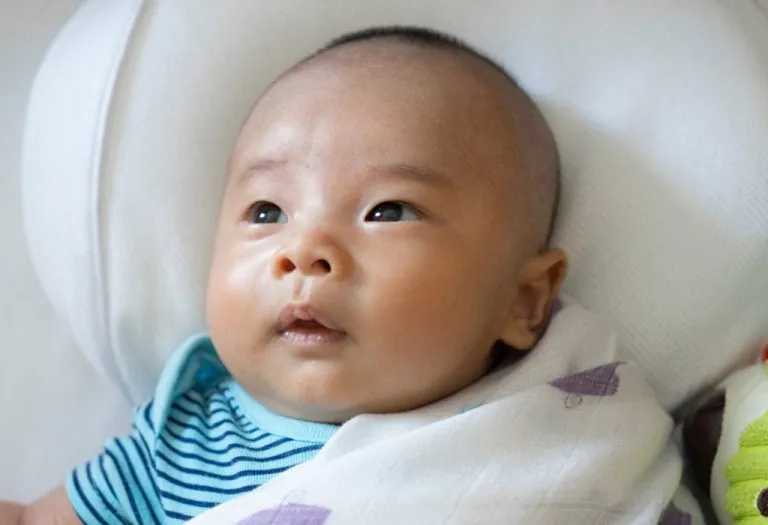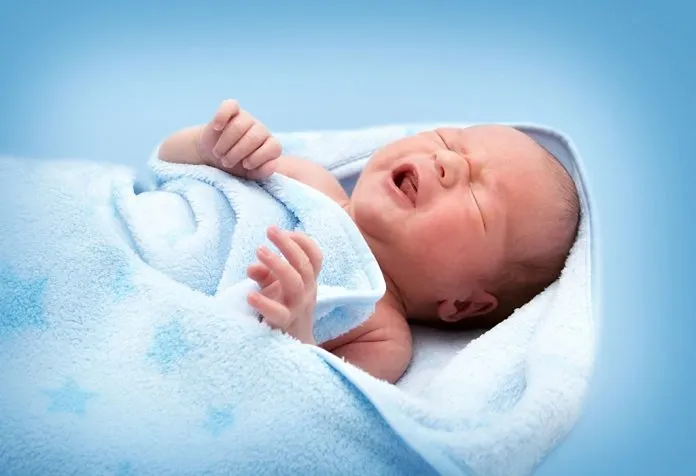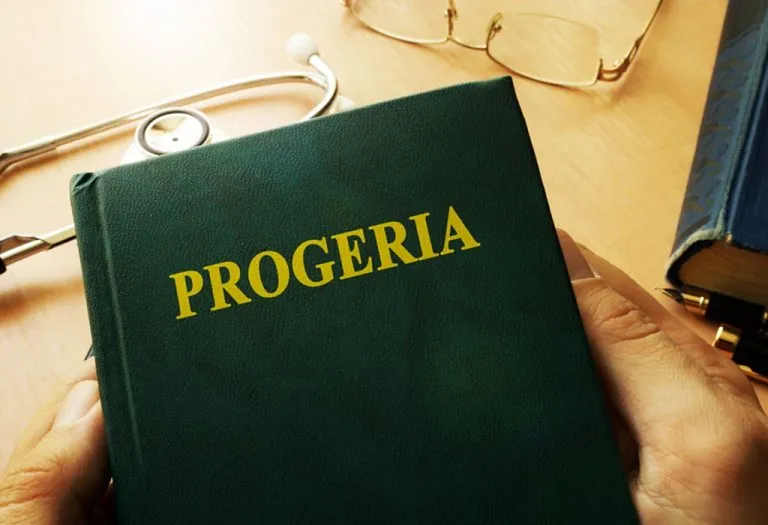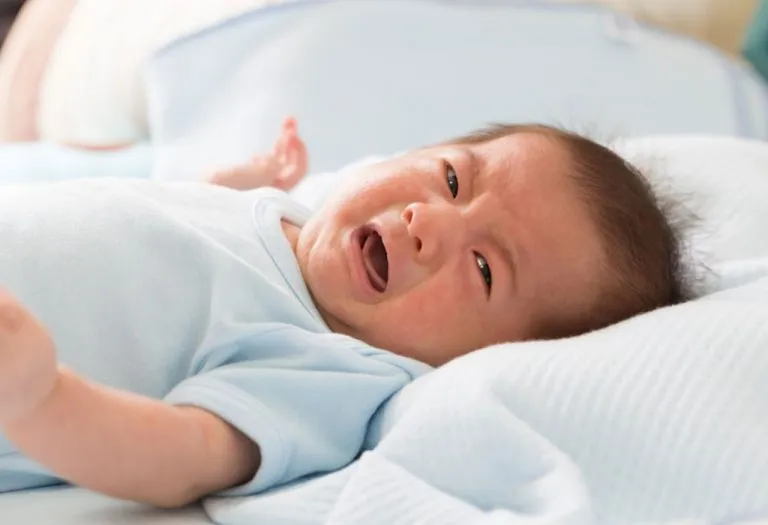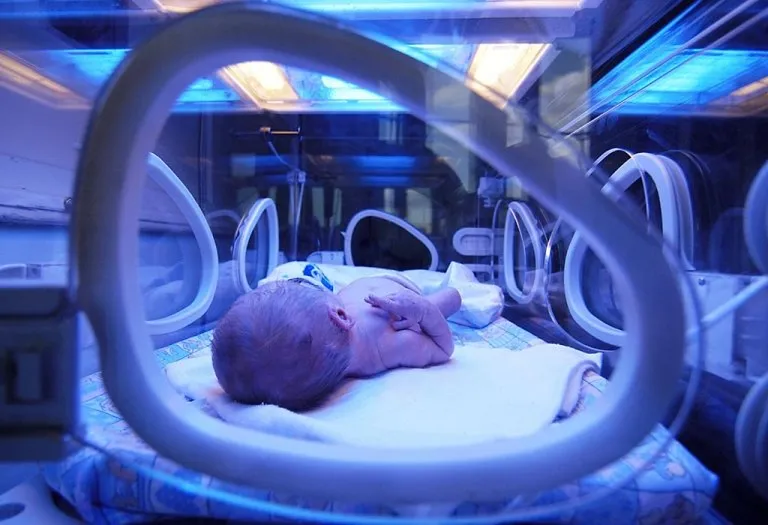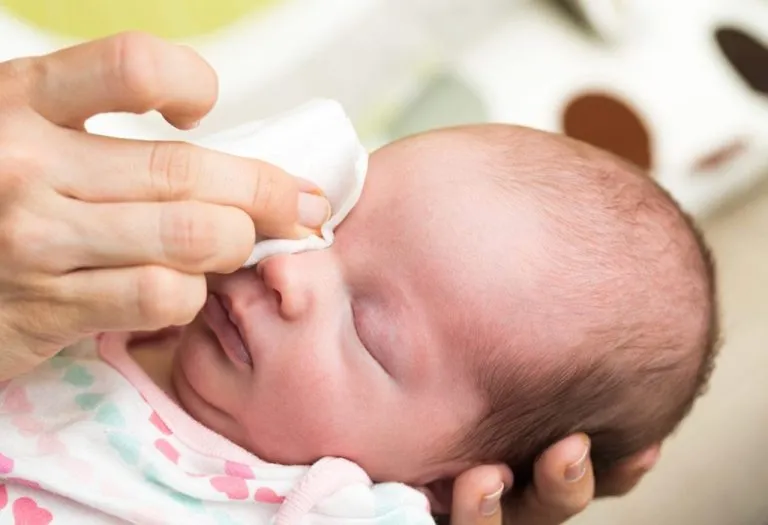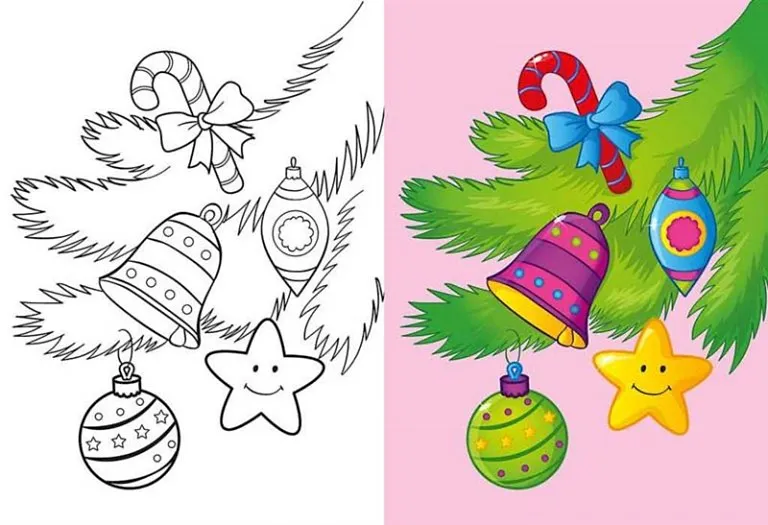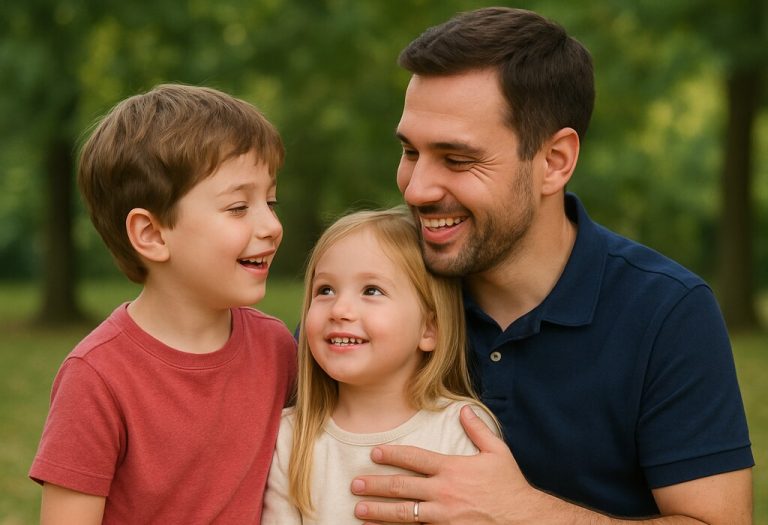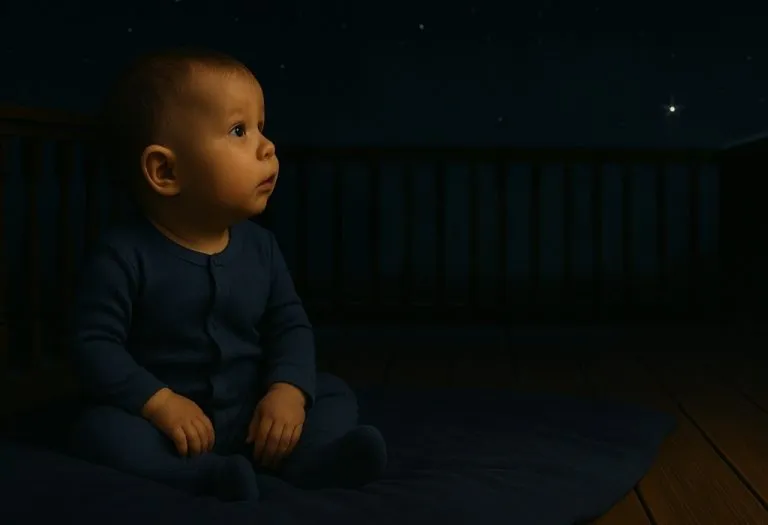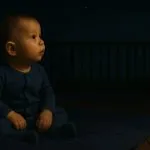Eye Problems in Babies – Signs, Causes and Precautions

- What Is Considered a Vision Problem for Babies?
- What Causes Baby Eyesight Problems?
- Signs & Symptoms of Vision Problems in Babies
- Most Common Eye Problems in Infants
- Precautions to Avoid Eye Problems
- FAQs
A baby’s health is of utmost importance to the parents. During the initial days, it is natural for parents to be worried and anxious about the baby. One of the initial problems that a baby can develop is eyesight-related problems. Babies rely on healthy eyes and clear vision for proper development, and any abnormalities in their eyesight can affect their learning and growth. Common signs of newborn eye problems include poor focus, excessive tearing, and unusual eye movements. Usually, it is not a serious health condition and can be easily treated with proper medical treatment.
To ease the concerns of parents, here is some information on eye problems affecting newborns and their treatment.
What Is Considered a Vision Problem for Babies?
A newborn might take some time to adjust and may experience vision problems such as uncoordinated eyes, teary eyes and crossed eyes. Let’s look at some of these newborn eye issues in detail:
- Some infants may have eyes moving independently of each other. This is perfectly normal as some infants take time to develop and strengthen their eye muscles. This issue should be resolved by itself by the time the baby is three months old.
- For some infants, the inner fold of skin in the inner corner of the eye can make it look crossed. As the baby grows, the skin retracts, and the eye becomes normal. But some babies may have cross-eyes and needs to be treated.
- The newborn does not completely develop the capability to produce tears; hence, they have blocked tear ducts. The baby’s eye may seem constantly teary even when the baby is not crying. This condition clears by the time the baby is one year old.
- If the baby has red eyelids, it indicates an eye infection. When exposed to light, if the baby shows signs of irritation, that could be due to increased eye pressure. Some babies shed excessive tears and cry frequently. This is because the tear ducts are blocked. If the pupil of the baby appears to be white, it could be early signs of cancer.
What Causes Baby Eyesight Problems?
While many baby eyesight problems are part of the normal developmental process, some may require medical attention. The infant’s vision gradually develops over time. A comprehensive eye examination must be conducted before the child turns one to diagnose any abnormality and ensure early intervention.
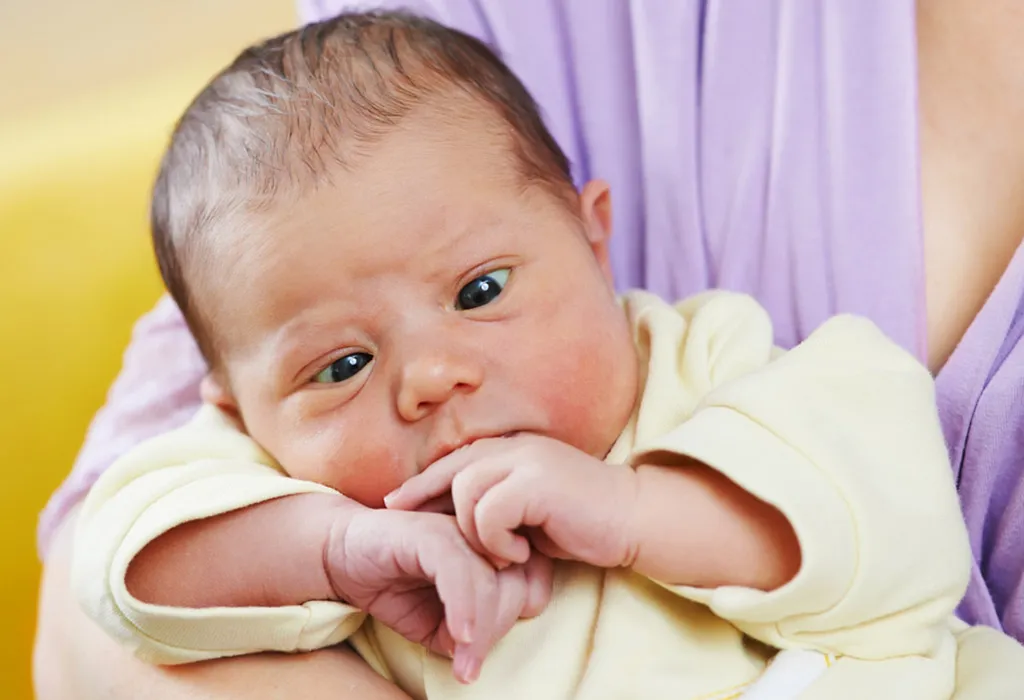
Genetic disorders are one of the reasons for eye problems like anophthalmia, aniridia, albinism, and anterior segment dysgenesis. A baby’s vision can be hampered by alcohol and drug abuse during pregnancy. Optic nerve hypoplasia is a common ocular malformation in babies that are born to mothers with diabetes.
Signs & Symptoms of Vision Problems in Babies
Babies may not be able to express discomfort, so it’s important for parents to observe their behaviour closely. Here are a few common signs of vision problems in infants (1).
- Unusual Eye Movement: This includes wiggling back and forth of the eyes or extreme turning of the baby’s eyes.
- Excessive Eye Rubbing: When the baby is constantly rubbing their eyes even when not feeling sleepy.
- Physical Anomaly: Any physical difference in the eye of the infant such as spots on the eye, only one eye being open or bulging eyes.
- Watery Eyes: Eyes that water excessively.
Most Common Eye Problems in Infants
Infants can develop several eye conditions that may affect their vision if not treated early. Here are a few of the most common infant eye issues that parents should be aware of (2):
1. Conjunctivitis or The Pink Eye
It is caused due to viral infections or blocked tear duct (3).
Symptoms:
- White parts of the eye are red
- Swollen eyelids
- Excessive tears
- Yellow pus-like discharge
Treatment:
- Doctor-prescribed antibiotic eye drops
- Warm massage
- Warm salt water cleaning
2. Falsely Misaligned Eyes
Also known as Pseudostrabismus, this condition can make the child’s eye look cross because of a wide nasal bridge (4).
Symptoms:
- The baby looks like he or she has cross-eye
- The baby looks at an object from side gazes
Treatment:
There is no treatment for this condition as this corrects on its own but at times surgery could be carried out for cosmetic reasons.
3. Amblyopia or ‘Lazy Eye’
It is a condition where one eye has more focus than the other eye. This is caused by anything like a camera flash or bright spotlight that blurs the vision (5).
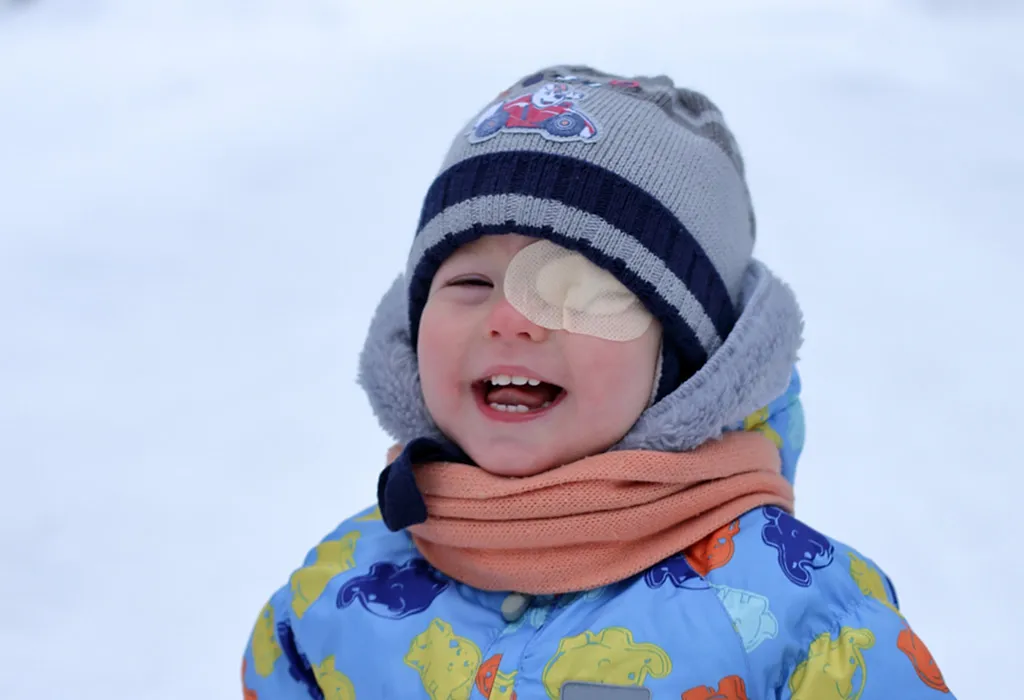
Symptoms:
- Eyes that wander apart
- Lack of depth perception
Treatment:
Lazy eye syndrome can be easily cured with the help of glasses, drops or contacts if it is detected early. Visit an ophthalmologist to get the right medical help.
4. Infantile Glaucoma
Infantile glaucoma is a rare but serious condition where the fluid in the eye does not drain properly, increasing pressure and potentially damaging the optic nerve (6).
Symptoms:
- Excessive tearing
- Sensitivity to light
- Enlarged or cloudy cornea
Treatment:
- Surgery to improve fluid drainage in the eye
- Eye drops or medication to reduce eye pressure
5. Strabismus (Crossed Eyes)
Strabismus occurs when a baby’s eyes are misaligned and do not work together properly, leading to one or both eyes pointing in different directions (7).
Symptoms:
- Eyes that appear misaligned
- Frequent squinting or closing of one eye
- Poor eye coordination
Treatment:
- Glasses or eye patches to strengthen weaker eye muscles
- Eye exercises or vision therapy
- Surgery to correct the alignment of the eyes
Precautions to Avoid Eye Problems
Though baby eye problems can make parents panic, they can take some steps as precautions to develop the baby’s vision.
- One good idea is to decorate the baby’s room with a dim lamp and alter the baby’s sleeping position to encourage the baby to look around.
- To develop a baby’s eyesight, one can also use hanging toys in the cradle that the baby can focus on.
- It is best to keep talking to the baby from different direction so that the child knows that someone is nearby and he or she keeps constantly changes vision.
- You can feed your baby from both, the right as well as the left side. This helps them focus on objects from different angles.
- Take your baby out to places such as a garden or mall and direct their attention to the various attractions to help sharpen their vision.
FAQs
1. At what age should my baby have their first eye exam?
It’s recommended that babies have their first eye exam between 6 and 12 months of age. However, an earlier examination may be necessary if there are any concerns or visible symptoms of eye problems (8).
2. Are all watery eyes in babies a sign of an eye problem?
Not necessarily. Watery eyes in babies are often caused by blocked tear ducts, a common and generally harmless condition that usually resolves on its own by the time the baby is one year old.
Parents should observe the baby closely, and if they think the baby’s eye problem persists and is out of control, then consult an eye specialist.
References/Resources:
1. Symptoms of Possible Eye Problems in Children; Nationwide Children’s Hospital; https://www.nationwidechildrens.org/conditions/health-library/symptoms-of-possible-eye-problems-in-children
2. Eye Problems in Children & How They’re Treated; American Academy of Pediatrics; https://www.healthychildren.org/English/health-issues/conditions/eyes/Pages/Specific-Eye-Problems.aspx
3. Conjunctivitis (Pink Eye); Centers for Disease Control and Prevention; https://www.cdc.gov/conjunctivitis/about/index.html
4. Pseudostrabismus; NHS; https://www.uhsussex.nhs.uk/resources/pseudostrabismus-2/
5. Amblyopia; Nemours KidsHealth; https://kidshealth.org/en/parents/amblyopia.html
6. DeLuise. V. P, Anderson. D. R; Primary infantile glaucoma (congenital glaucoma); PubMed; https://pubmed.ncbi.nlm.nih.gov/6353647/
7. Strabismus; Nemours KidsHealth; https://kidshealth.org/en/parents/strabismus.html
8. Infant Vision: Birth to 24 Months of Age; AMERICAN OPTOMETRIC ASSOCIATION; https://www.aoa.org/healthy-eyes/eye-health-for-life/infant-vision?sso=y
Also Read:
Bronchitis in Babies
Eye Discharge in Newborn Babies
Sticky Eyes in Newborn Infants
Dark Circles Under Baby’s Eyes
Baby Eyes Rolling Back – Is It Normal?
Was This Article Helpful?
Parenting is a huge responsibility, for you as a caregiver, but also for us as a parenting content platform. We understand that and take our responsibility of creating credible content seriously. FirstCry Parenting articles are written and published only after extensive research using factually sound references to deliver quality content that is accurate, validated by experts, and completely reliable. To understand how we go about creating content that is credible, read our editorial policy here.







